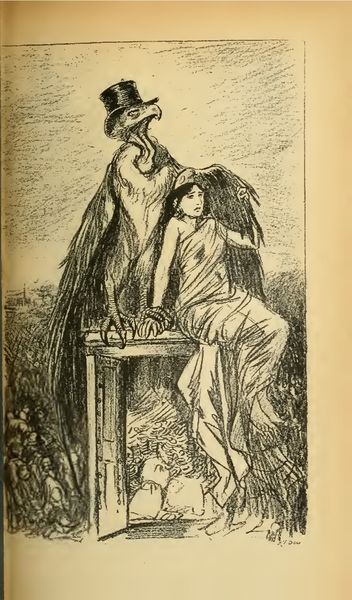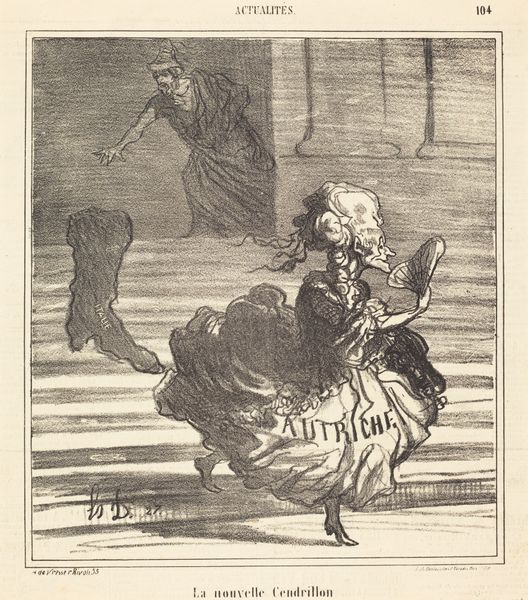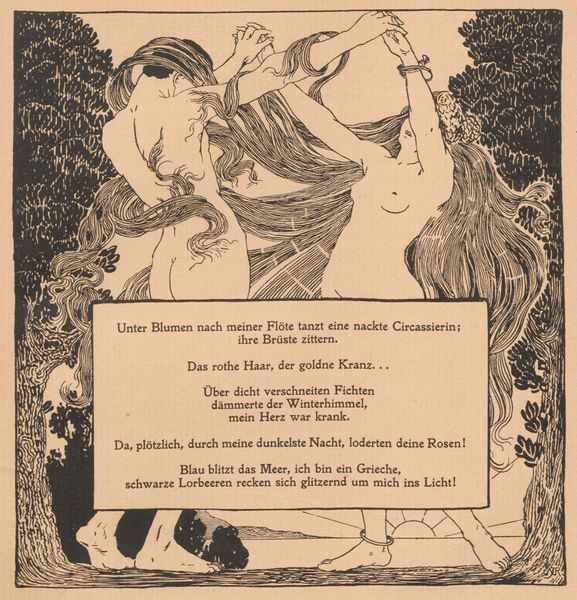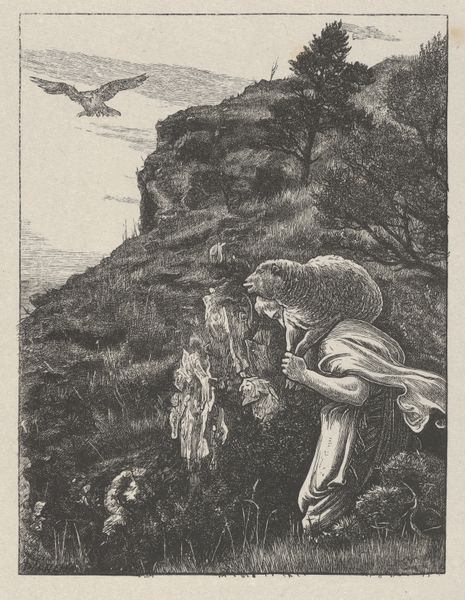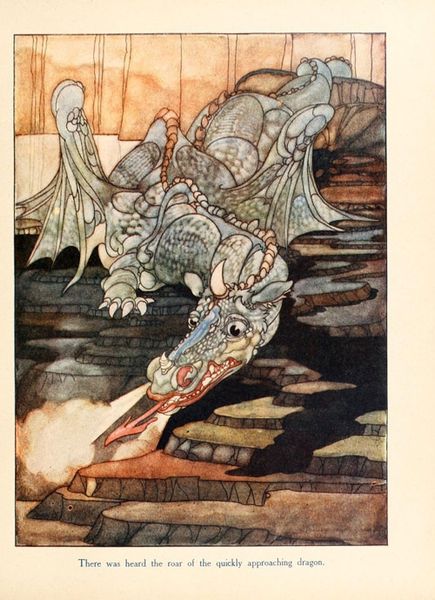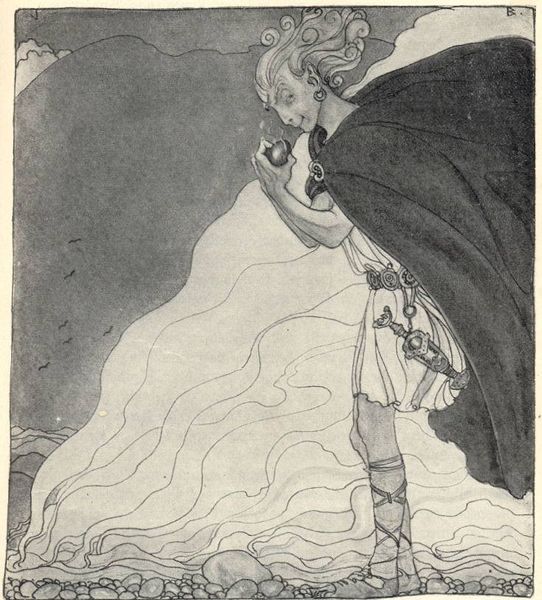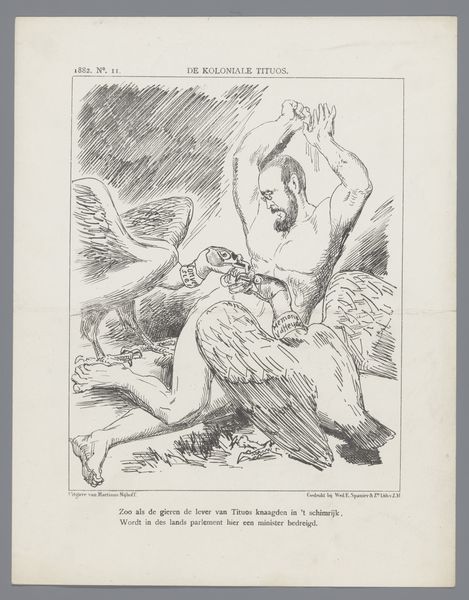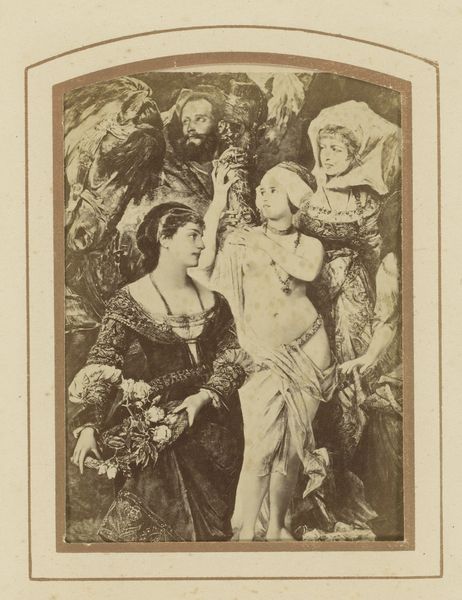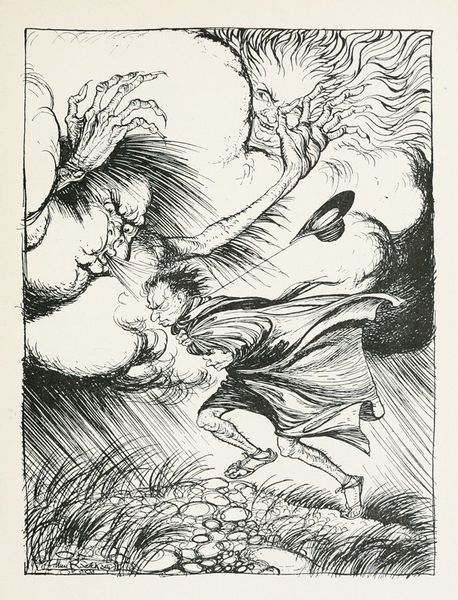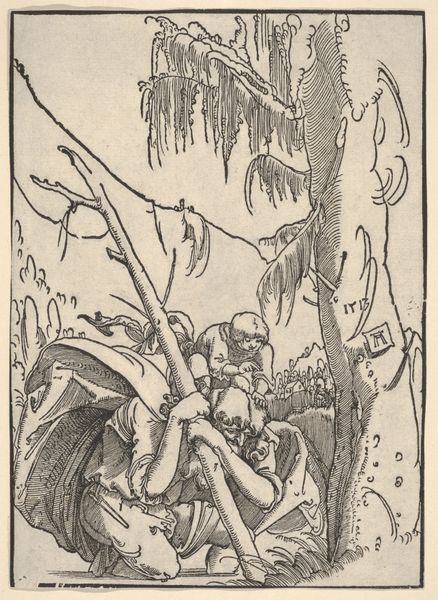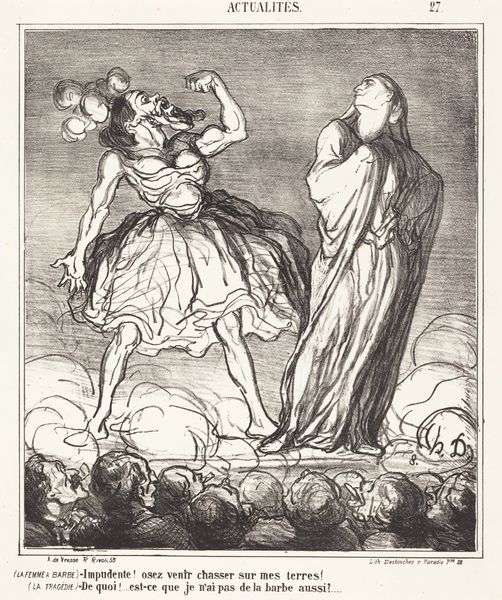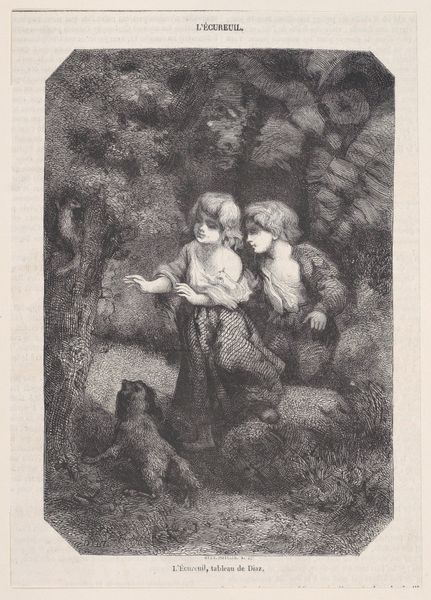
drawing, print, ink
#
drawing
#
narrative-art
# print
#
german-expressionism
#
figuration
#
text
#
ink
#
comic
#
symbolism
Copyright: Public domain
Curator: Let’s turn our attention to “Simplicissimus,” a print made in 1905 by Théophile Alexandre Steinlen. The title itself hints at the satirical German magazine for which it was created. What are your immediate thoughts? Editor: There's an eerie theatricality to it. A frog-like figure, adorned and bedecked in jewels, clasped by a skeletal bear… with owls ominously eyeing scattered coins. It’s all shadowed, and rather grim. Curator: The combination of ink and color adds to that unsettling atmosphere. The lines are sharp, revealing the hand of the artist, and emphasizing the social commentary Steinlen’s known for. One could delve into the political climate of early 20th-century Europe and the use of the relatively accessible medium of the illustrated journal. It makes a potent, reproducible statement about corruption. Editor: The frog figure certainly strikes a powerful symbolic chord. Given the era and the context of "Simplicissimus," it suggests the aristocracy, or perhaps bourgeois decadence, weighed down with adornment while life decays all around. The bear—surely a symbol of Russia in that period—clutches it, but his embrace looks skeletal, even deadly. And of course the coins reference greed. It feels heavily allegorical. Curator: Precisely. And looking at the textures – the almost frantic scratching in the darker areas compared to the smoother expanses of the frog's dress – there’s a distinct visual tension mirroring the thematic conflict. Editor: Indeed. Notice how Steinlen uses the symbolic value of animals so eloquently – not just the Russian bear, but those predatory owls drawn to the glint of lucre. These elements, rendered in that darkly comic style, really nail the piece’s critique of societal corruption. Curator: The physical properties of printmaking also gave such impactful art broader circulation within society at the time. The ink, the paper, the machinery—each step democratizing imagery like this to a wider populace, far outside elite circles. Editor: That blending of fable with cutting political commentary using such loaded iconography offers layers that resonate even today. Curator: It prompts reflection on our values and visual literacy. Editor: I see how form amplifies function here. The art’s components are truly integral.
Comments
No comments
Be the first to comment and join the conversation on the ultimate creative platform.
